Table of Contents
There are watches that captivate you not because of their prestige, but because they remind you of a time when “Swiss Made” truly meant honesty and integrity.
This Alsta chronograph is one of those pieces — quiet, unassuming, yet carrying a vintage soul that speaks to you the moment you lay eyes on it.
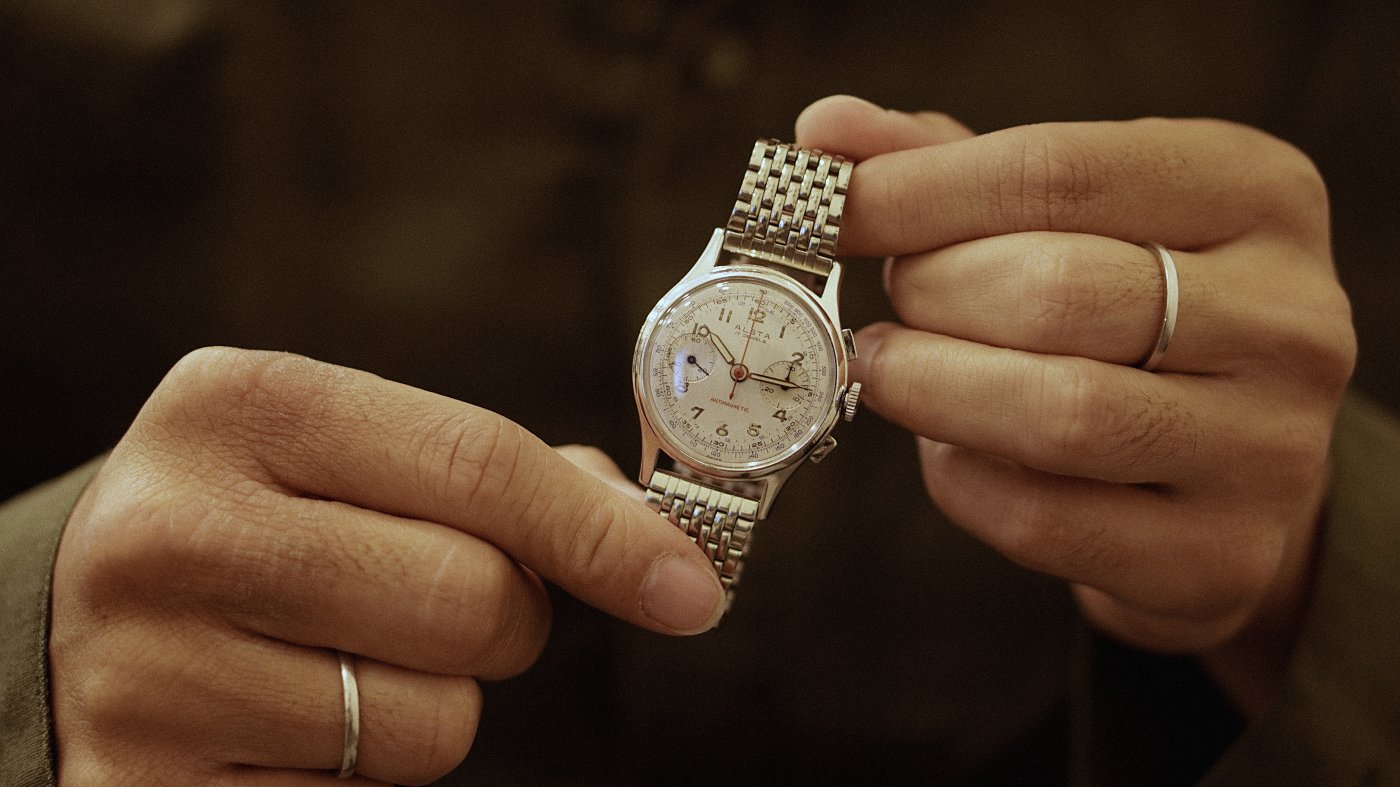
A Forgotten Brand Worth Remembering
Alsta was a small name in the grand world of Swiss watchmaking.
Born around the 1940s, the brand produced a variety of practical watches — chronographs for civilians and professionals, and even divers built for the working man.
The name resurfaced decades later in Jaws (1975), when oceanographer Matt Hooper wore an Alsta Nautoscaph on screen — a cinematic cameo that instantly revived interest in a brand long forgotten.

But if you look back two or three decades before that film, you’ll find that Alsta had already made beautifully hand-built chronographs, and the piece here is a near-perfect example of that golden mid-century era.
Honest Beauty from the Post-War Years
At 34 mm, this watch embodies that post-war sensibility — compact, purposeful, and designed at a time when every line and numeral had a reason to exist.
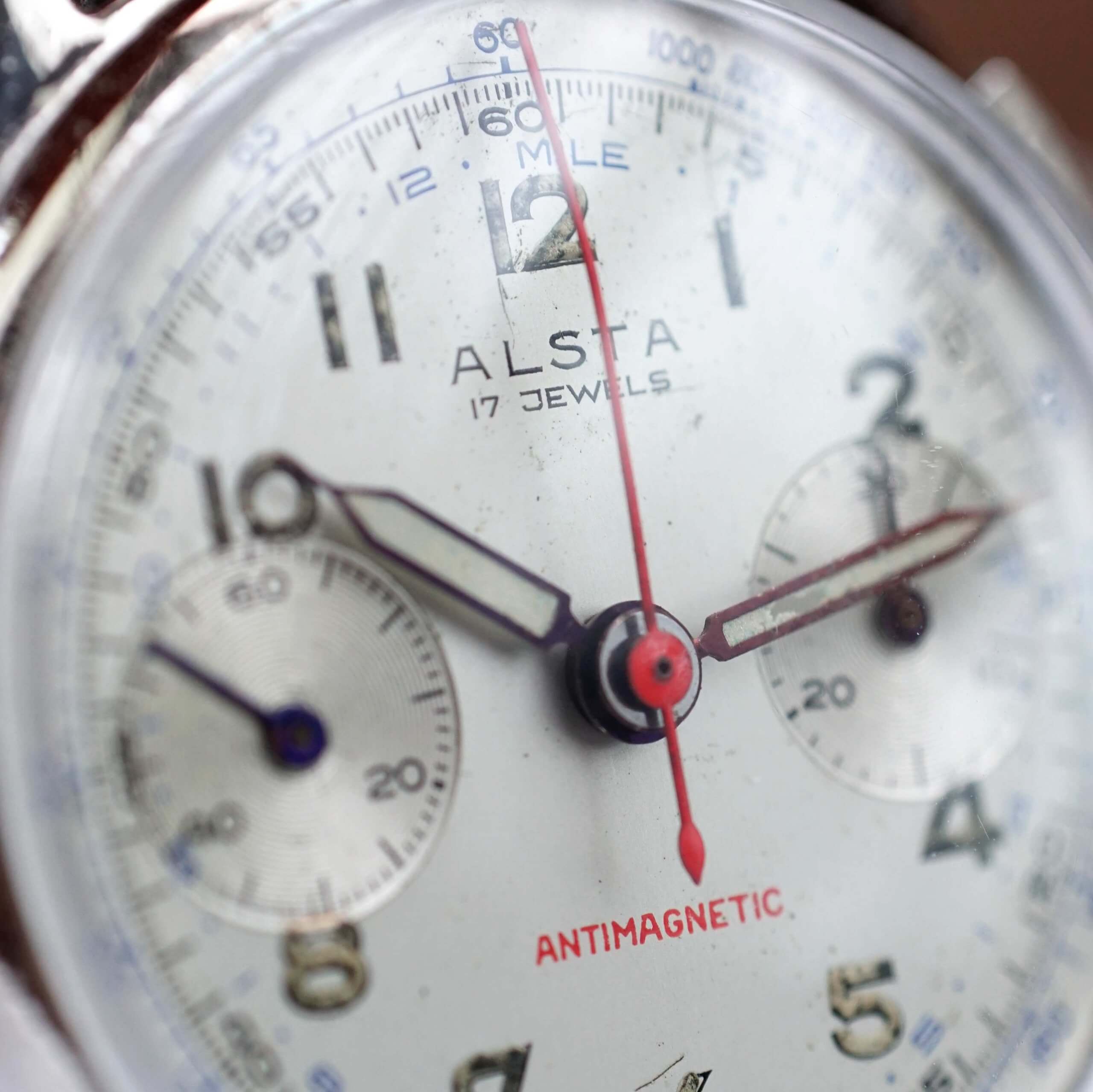
The bright-but-aged dial features the classic two-register layout — running seconds at 9 o’clock, 30-minute counter at 3 — and at its center, a slender red chronograph hand glides across the word “ANTIMAGNETIC” printed in red, a small but telling nod to Swiss industrial optimism.
A blue tachymeter scale circles the edge, topped by the word “MILE” at 12 o’clock — a charming sign that this example was made for the American market, where Alsta exported heavily in the late ’40s and ’50s.
The bold syringe-style hands with aged lume, the raised Arabic numerals now softly yellowed, and the slightly domed acrylic crystal together create an unmistakably vintage harmony — the kind of watch meant to be worn, not stored away.
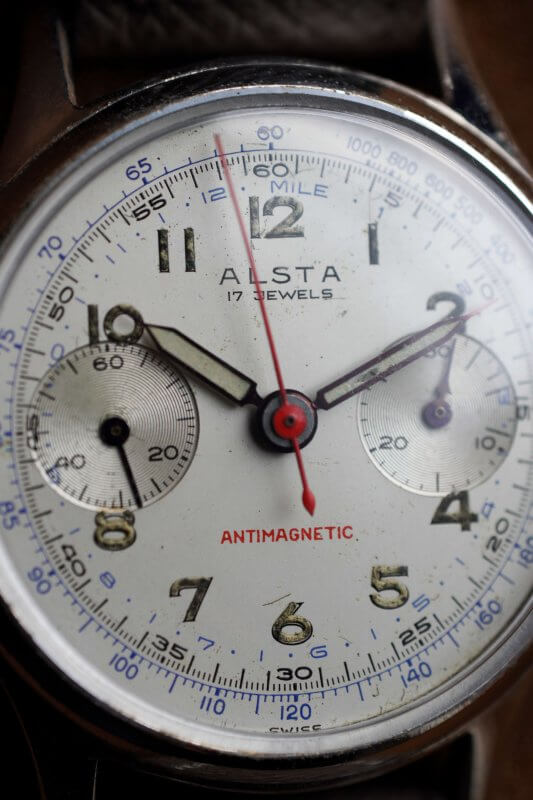
Inside: The Landeron 248 — A Quiet Mechanical Elegance
Flip it over and you’ll find the Landeron 248, one of the most reliable and widespread manual chronograph movements of the mid-20th century.
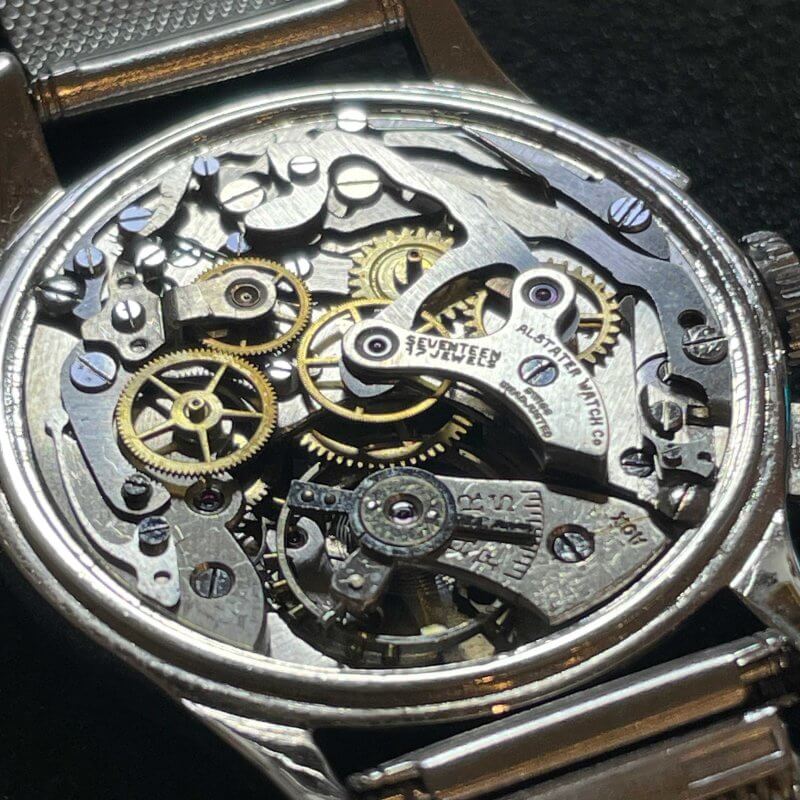
Less glamorous than a Valjoux, perhaps, but full of charm: its cam-switch mechanism delivers a soft, satisfying click and a mechanical tactility you can feel.
The bridge engraving — “ALSTA WATCH Co – SEVENTEEN JEWELS – SWISS” — remains sharp, and the movement still runs strong after half a century. It’s a quiet testament to the “built-to-last” ethos that defined Switzerland’s golden age of watchmaking.
On the Wrist: Small, Real, and Warm
A 34 mm chronograph might sound small by modern standards, but this Alsta wears confidently.
Its slim case hugs the wrist, and the layered dial adds depth that makes it feel larger than the numbers suggest.
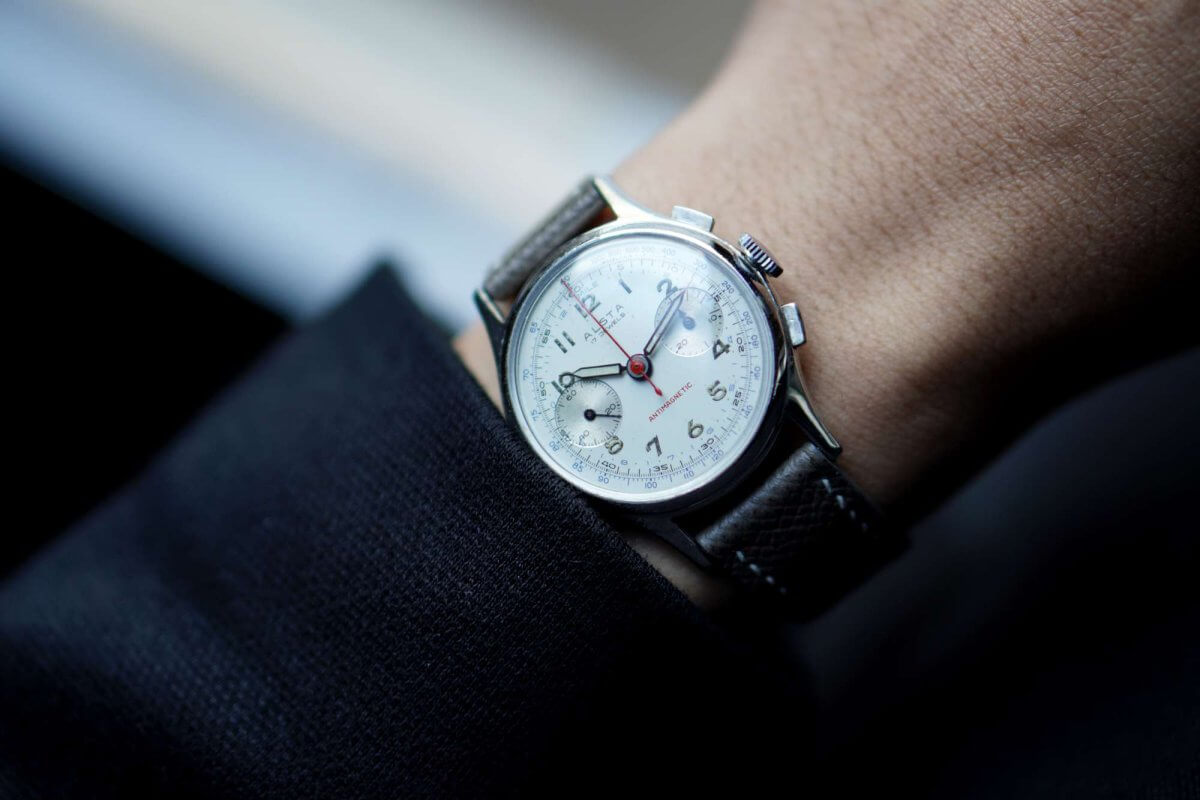
Winding it each morning brings a familiar, tactile joy — a soft rasp under your fingers, just enough resistance to remind you that this is something alive, not digital.
It’s a simple pleasure a smartwatch will never replicate.
Why It Matters
This Alsta isn’t rare, nor is it a grail for collectors.
But its honest simplicity — its very Swissness — is what makes it special.
Every nick and every patch of patina tells a story that no restoration or Photoshop can recreate.
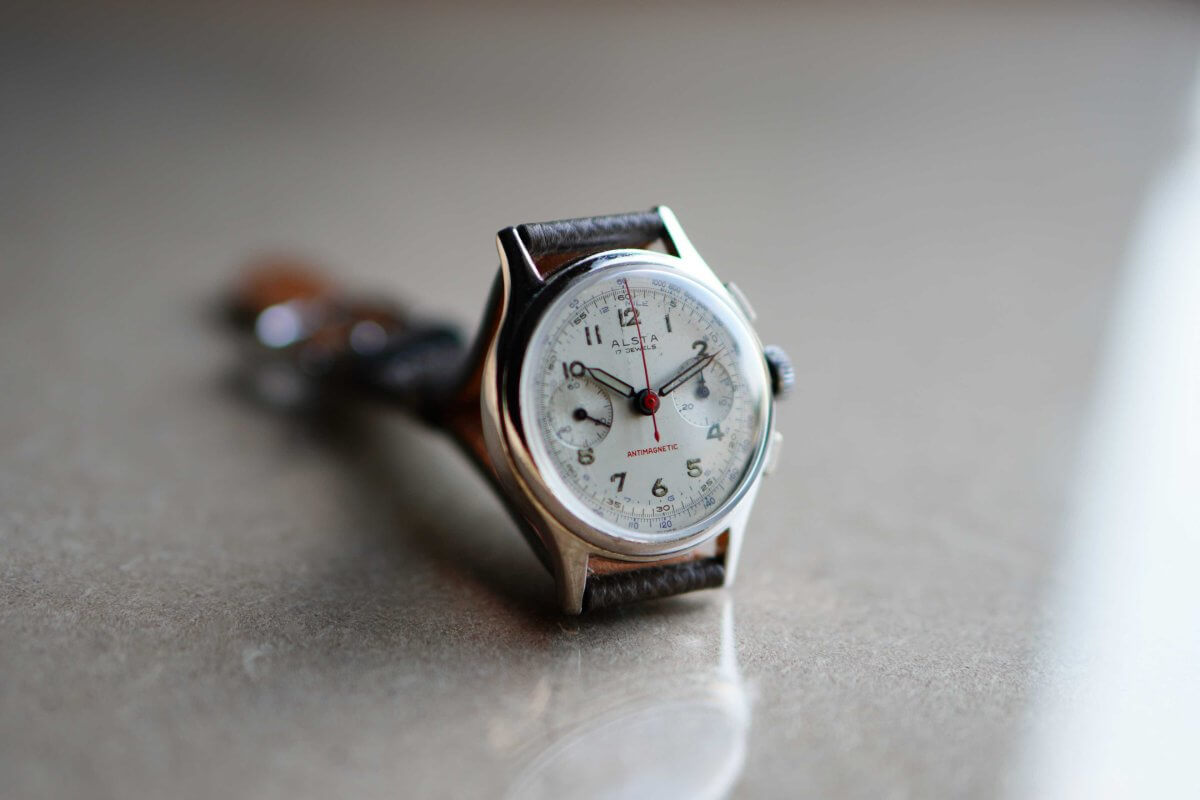
In a time when people spend tens of thousands chasing “safe” logos, owning an Alsta chronograph feels like holding a small mechanical memory from a more authentic past — real, humble, and quietly collectible.
A New Chapter for Alsta — From Memory to Revival
Here’s the beautiful twist: Alsta never truly disappeared.
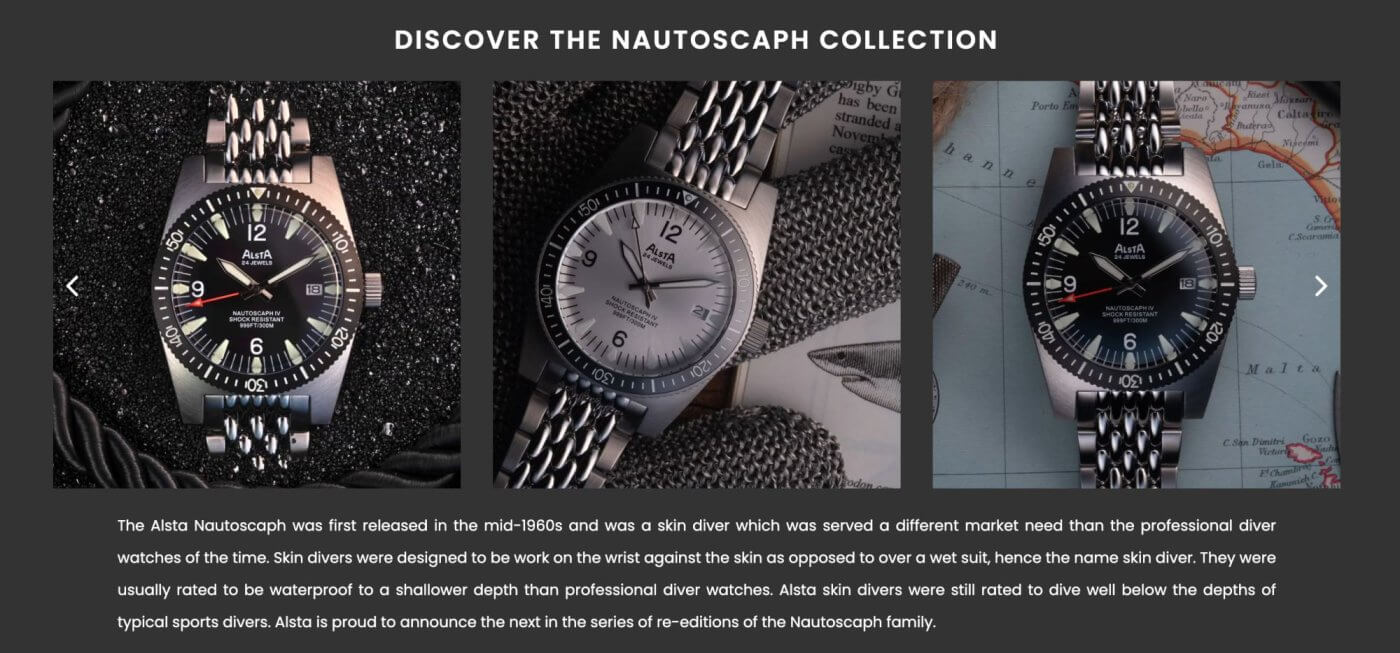
After decades of dormancy, the brand was revived in the mid-2010s by British collector Angus MacFadyen, who saw in Alsta not just an old name, but a living mechanical spirit worth rekindling.
In 2017, Alsta returned with the Nautoscaph II, directly inspired by its on-screen hero from Jaws (1975).
It wasn’t a replica but a rebirth — a 40 mm stainless-steel case, domed sapphire crystal, modern Sellita movement — yet every design line carried that vintage DNA collectors cherish.
Since then, the brand has expanded with models like the Motoscaphe, a tool watch for motorcyclists, and the Superautomatic 2025, its latest creation.
The new Superautomatic stays true to the classic silhouette, boasting 300 m water resistance and a Sellita SW200-1 inside, but it’s very much a watch of today — robust, compact, precise, and still infused with vintage soul.
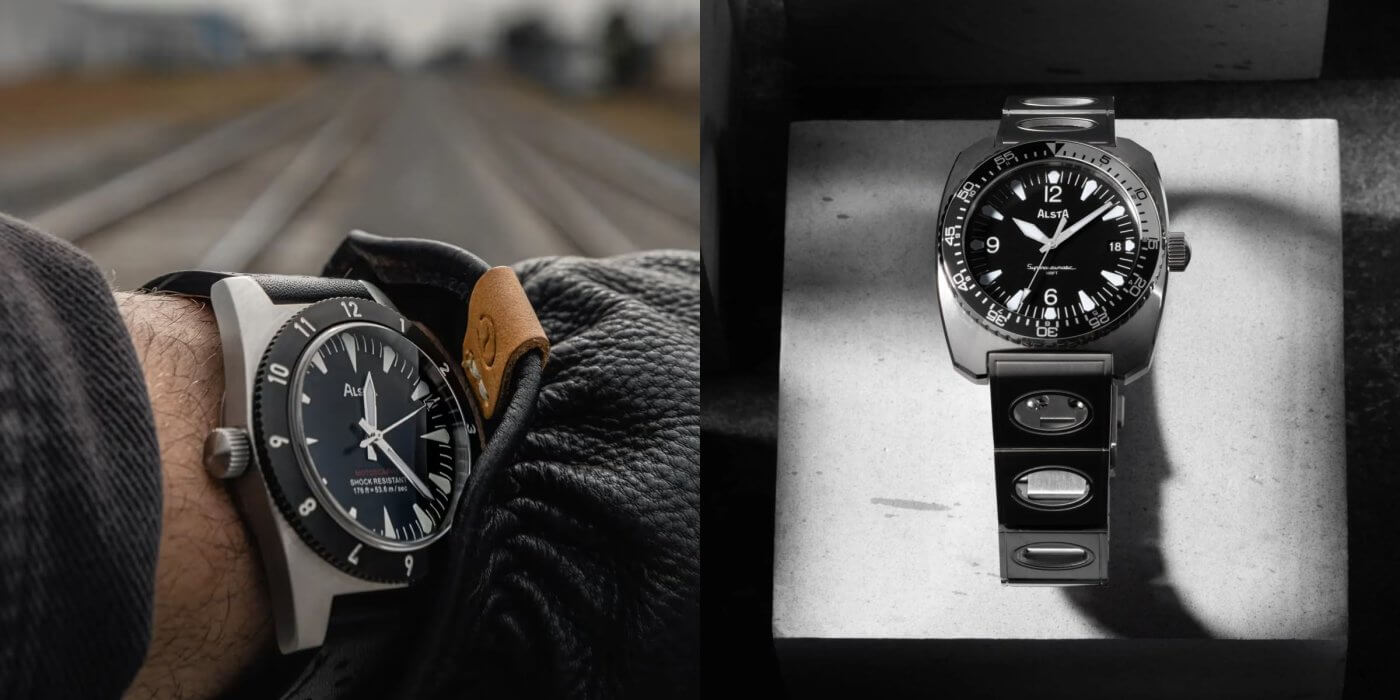
What’s remarkable is that Alsta never chased luxury.
It has remained faithful to its original philosophy: making watches good enough to wear every day, honest enough to be loved.
Each modern Alsta is a tribute to its past — proof that in an overcrowded watch market, there’s still room for sincerity.
In the End — A Small Brand with a Big Story
Look at this vintage Alsta chronograph, then at the new Superautomatic or Nautoscaph models, and you’ll see the same thread running through them:
a love for durability, simplicity, and honesty in craftsmanship.
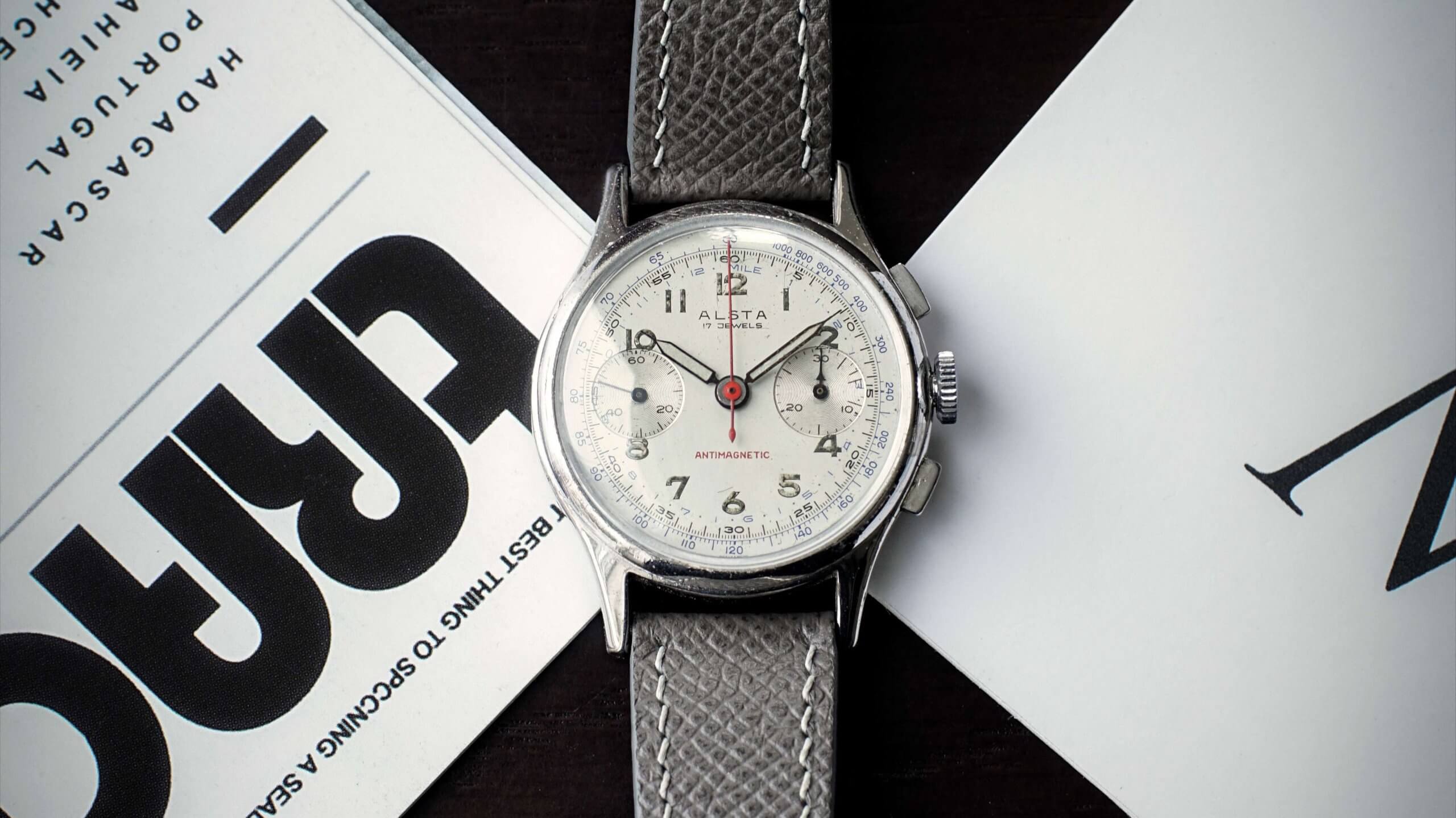
No giant marketing budgets.
No celebrity ambassadors.
Just watchmakers — and those of us who still believe a mechanical heartbeat can move the human one.
Alsta may never climb back to commercial stardom, but for anyone who’s wound a Landeron 248 or fastened a new Superautomatic to their wrist, it has already achieved what many big brands are still chasing: authentic value.


 Tiếng Việt
Tiếng Việt